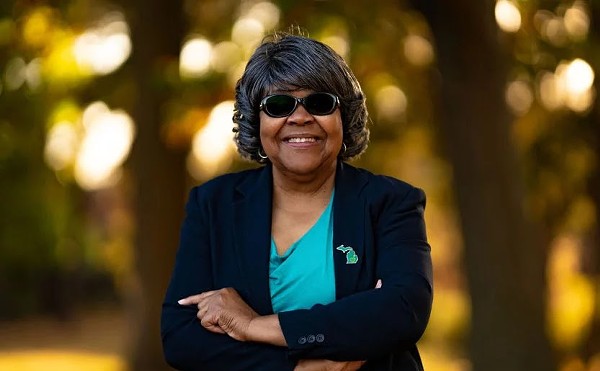“Rapid buses.”
Detroiter Catherine LaPalm would never use those two words in the same sentence, at least not with a straight face. After all, the 76-year-old LaPalm often waits 40 minutes to catch a bus to the hospital downtown and then prays she actually will get there.
“You never know when the bus will come or even if it will come,” said LaPalm. “And when it does arrive, it breaks down a lot.”
It’s not surprising that when regional leaders began talking recently of bringing “rapid” bus service to metropolitan Detroit, LaPalm and other bus riders cringed as if bracing to hit a pothole. LaPalm wonders whether Detroit should focus first on reliable buses. Others suggest that Detroit should follow the lead of such cities as Chicago, Cleveland, Minneapolis, and Denver that have built or are developing passenger rail systems.
Yet Detroit could be catching the leading edge of a national trend toward rapid bus systems, which are less expensive to build and more adaptable than trains. Some cities with passenger trains are even adding rapid bus service to their existing rail networks.
Rapid buses look and act like trains. They are longer than typical buses, have multiple loading doors, use well-spaced stops, and travel in express lanes or corridors separate from other traffic. But because rapid bus systems still rely on tires, they require less time and money to build. The federal government supports the idea of rapid bus service and has funded demonstration projects in 10 cities, ranging from colder climates like Boston to snow-free cities like Miami.
Detroit’s vision
In Detroit, a coalition of labor, government and business, including the Big Three automakers, has put $200,000 into a rapid bus study for the region. The group, called the Metropolitan Affairs Coalition, plans in April to release the findings of its study: “SpeedLink … A Train on Tires.” It is the first step toward a project that could receive up to 80 percent of its funding from the federal government.
The coalition is considering rapid buses that would carry up to 270 people per vehicle and run on clean-burning compressed natural gas; traffic signals would change to green as the buses approach. Possible corridors for rapid bus lines include metropolitan Detroit’s major thoroughfares: Woodward, Michigan, Gratiot, Grand River, and Van Dyke avenues; Fort Street; and Telegraph Road. The Metropolitan Affairs Coalition envisions rapid bus lines eventually connecting with traditional buses along the east-west “mile roads” and with smaller buses serving neighborhoods. The rapid bus system could ultimately link with passenger rail service if the region decides to pursue that later.
Time and money are the critical factors behind the coalition’s pursuit of rapid buses. “Rail tends to be much more expensive than bus rapid transit,” said David Sanders, vice president of the Metropolitan Affairs Coalition. “We feel that with buses we can spread the money farther and provide more service to more people. Rail can also take 10 years or more to plan, fund and construct, while rapid bus service could start up in half that time,” he said.
Public perception
Cleveland, which shares a similar Midwestern climate and culture with Detroit, is an interesting test case for southeast Michigan. Cleveland constructed a downtown passenger rail line in 1996 but has opted to extend it with a new rapid bus system, primarily because the “train on wheels” costs less per mile to build.
Cleveland planners believe the ultra-modern buses and spruced-up corridor will attract riders who otherwise might drive. “The whole concept is gorgeous,” said Jeri Chaikin, who directs the project for the Greater Cleveland Regional Transit Authority. “The buses will look more like trains, the stops will be covered and well lighted, the center median where riders board and exit is landscaped. This is much more than a bus project. It’s the whole concept that has sold this to the community.”
For metropolitan Detroit to succeed with its rapid bus plans, officials must convince the public that rapid buses are first-class transportation on a par with trains and that the city can overcome chronic bus service problems.
Janice Joseph, staff organizer for the southeast Michigan, faith-based, social justice group Metropolitan Organizing Strategy Enabling Strength, or MOSES, says rapid buses could be an improvement.
“We don’t have the luxury of choosing between buses and trains here. With the limited funding provided by the Michigan Department of Transportation, we’re still trying to get the buses to run on time.” Ms. Joseph is keeping an open mind about the “SpeedLink” proposal. “It’s a step in the right direction and, hopefully, the beginning of a regional discussion about world-class transportation in southeast Michigan.”
Read about Detroit’s “SpeedLink” study at www.semcog.org and about the Federal Transit Administration’s rapid bus projects, including Cleveland’s, at brt.volpe.dot.gov/.
Kelly Thayer is transportation project coordinator for the Michigan Land Use Institute. E-mail [email protected]




